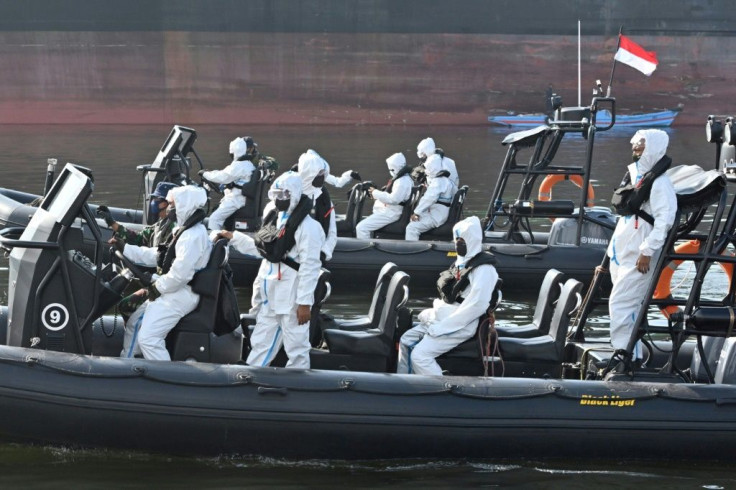Indonesia Stages Major Naval Drills Amid Rising Tensions In South China Sea

KEY POINTS
- The series of drills began July 18 and will conclude Sunday, July 26
- The drills will include an amphibious exercise on a beach at Singkep
- On the agenda are sea battle simulations and 2,000 military personnel with 26 warships, 19 aircraft, 18 marine combat vehicles
The Western Fleet of Indonesia's Navy is holding a series of major military exercises in the Java Sea and the South China Sea amid rising tensions between China and the United States in the international waterway.
In what could be seen as sending a clear message to China, the series of drills began July 18 and will conclude Sunday, July 26. The drills will include an amphibious exercise on a beach at Singkep, part of the Riau archipelago where the two seas meet.
On the agenda are sea battle simulations and 2,000 military personnel with 26 warships, 19 aircraft, 18 marine combat vehicles, Naval Fleet Command I spokesman Lieutenant Colonel Fajar Rohadi said.
"At the fleet level, this is the most complex exercise because there will be more exercises involving all naval units," Rohadi said.
He added the Java Sea drills included damage control activities, communications, simulations of anti-submarine and surface warfare in comments made Wednesday to BenarNews, a five-language online news service affiliated with Radio Free Asia (RFA).
Military observer Beni Sukadis, at the Indonesian Institute for Defense and Strategic Studies, commented on the country’s efforts to assert its maritime sovereignty.
He told BenarNews, “Even though we don’t have many warships, we are showing that we have the determination to assert our sovereignty. In terms of capacity building and professionalism, routine exercises are necessary. It can be once or twice a year. It sends a message that the Navy is trying to improve its capacity.”
The Indonesian drills began shortly after U.S. Secretary of State Mike Pompeo’s recent declaration that Beijing’s claims in the South China Sea were "completely unlawful". The comments were described as a watershed statement in a July 22 article by RFA. Pompeo included Indonesia’s Natuna Islands in his words that were taken as a toughened stance by the U.S. on the South China Sea issue.
Beijing, through its embassy in Washington, responded to Pompeo by accusing America of continued interference, stirring up the tension and inciting confrontation in the region as well as flexing its muscles "under the pretext of preserving stability."
Indonesia’s issues with China over the Natuna Islands are like other South China Sea conflicts in the Spratly Islands and the Paracel Islands. In 2016 and late 2019, Jakarta and Beijing sparred over the presence of Chinese fishing boats near the islands, located in the Riau Islands province close to where the current drills are being held.
The common theme with all the conflicts is China’s Nine-Dash line claims, rejected by the Permanent Court of Arbitration in the Hague and deemed unlawful by the U.S. China has little regard for the PCA ruling and any exclusive economic zone (EEZ) in the resource-rich waters of the South China Sea.
© Copyright IBTimes 2025. All rights reserved.




















